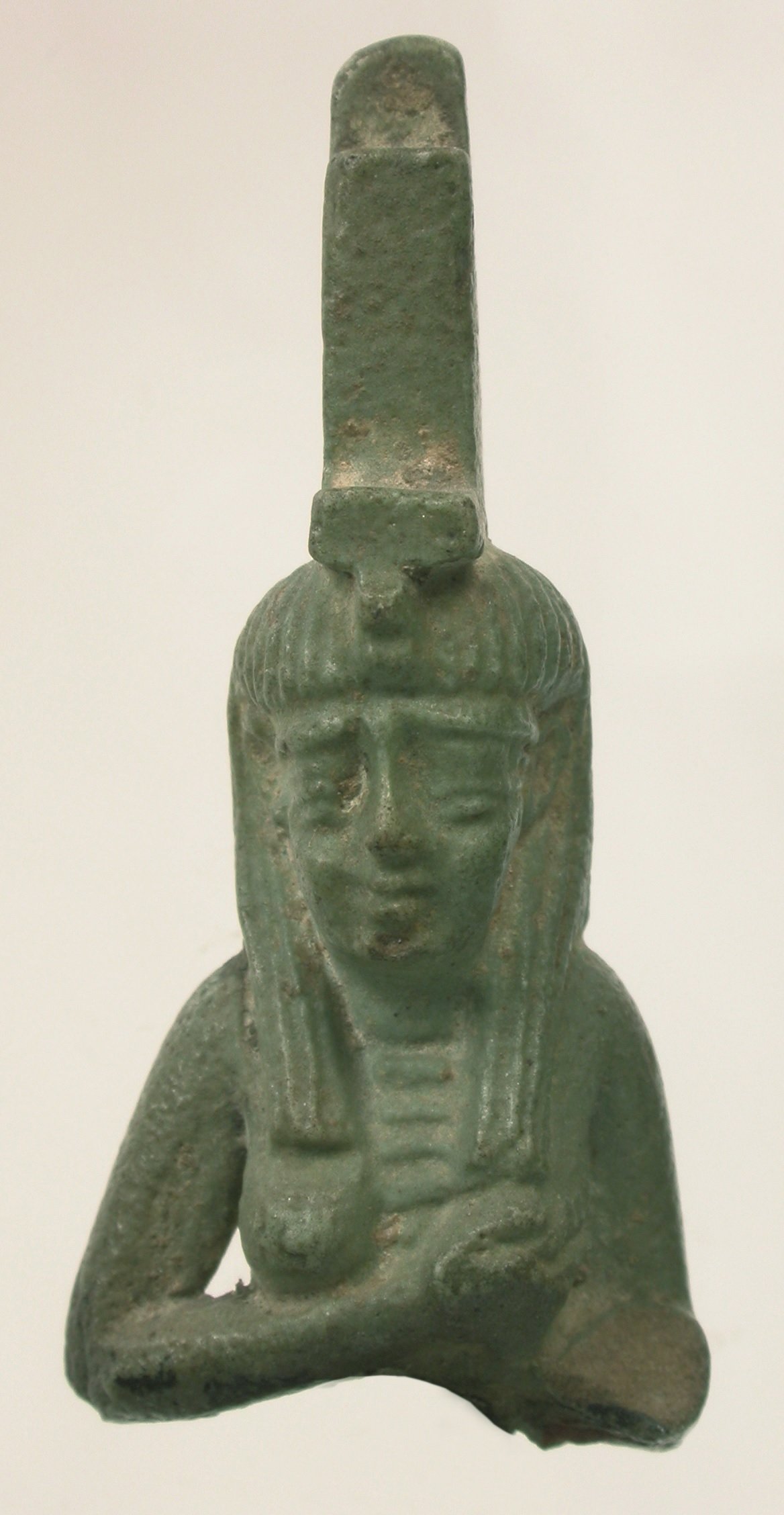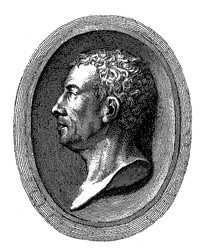Ägyptisch, Ptolemäerzeit, 3.-1.Jh.v.Chr.
Von der Figur ist nur noch das Oberteil erhalten. Die dargestellte Göttin greift mit der rechten Hand nach der linken Brust. Vom linken Arm ist nur noch der Oberarm erhalten. Sie trägt eine dreiteilige Perücke. Die Göttin hat ein großes, langes Gesicht, das sich zum Kinn hin verjüngt. Die Gesichtkonturen, Augen, Brauen und Mund sind deutlich herausgearbeitet. Die Lippen sind zu einem leichten Lächeln verzogen und der Abstand zwischen Augen und Augenbrauen ist sehr groß. An der Stirn der Göttin richtet sich eine Uräusschlange auf. Auf dem Kopf sitzt ein hoch aufragender Kopfschmuck in Form eines Blockthrons.
en

